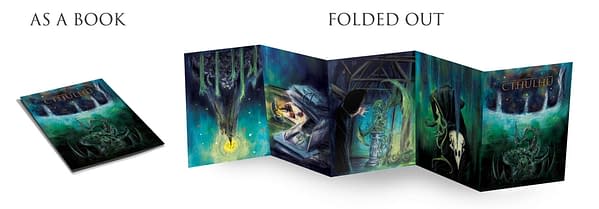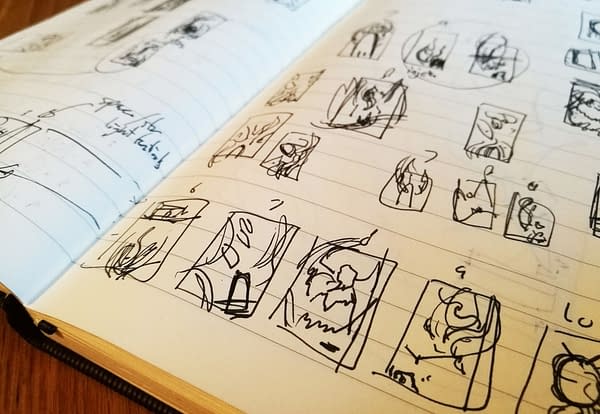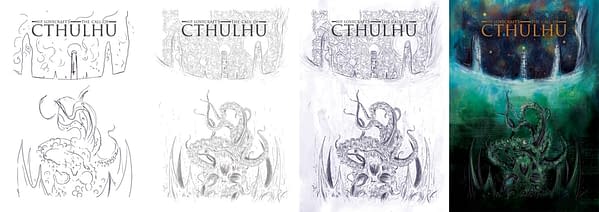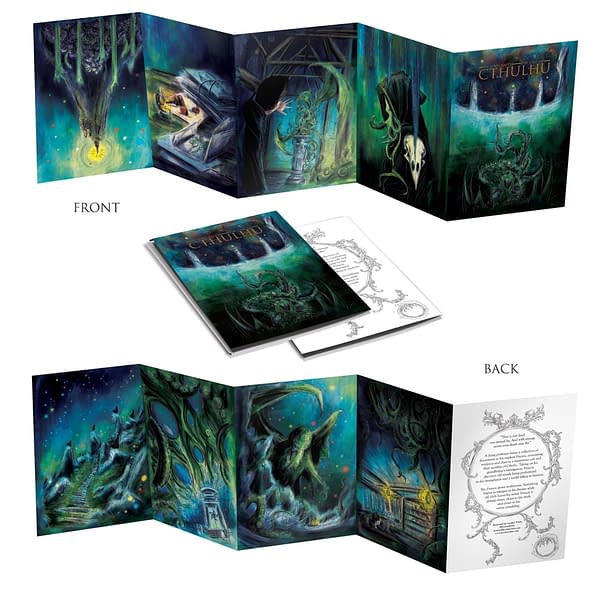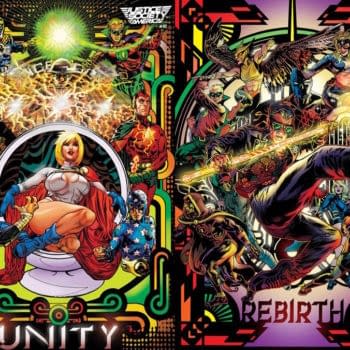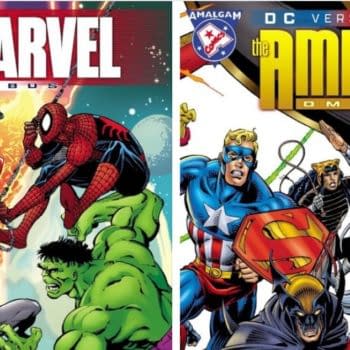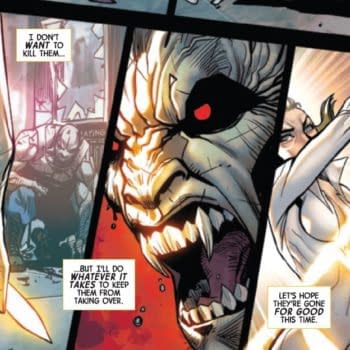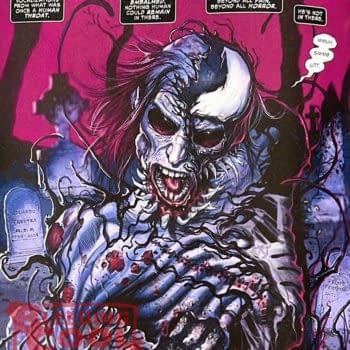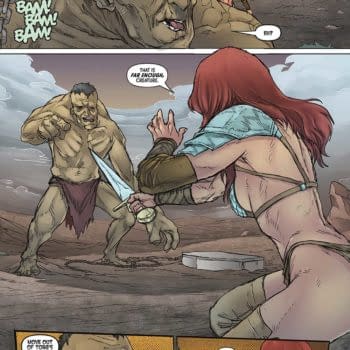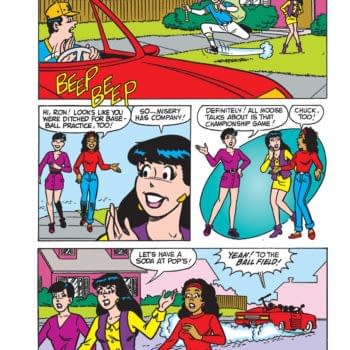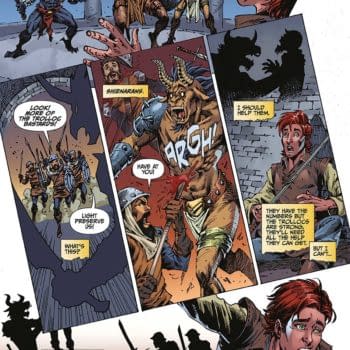Posted in: Comics | Tagged: books, Comics, cthulhu, HRL, lovecraft
Adapting Madness – Bringing H.P. Lovecraft's World to Life
Lyndon White writes:
This time last year I adapted Bram Stroker's Dracula in the form of a concertina book — a small fold-out artbook that can be read like a normal book, or be folded out and displayed like a piece of art. Visualising Dracula is fairly straightforward; he is a vampire. Once you've drawn the human figure and pointy teeth, you're halfway there. But a year later, I've adapted something a little different: H.P. Lovecraft's The Call of Cthulhu and all the madness that comes with it.
Cthulhu is visually familiar to a lot of people. Most people identify him (or better, it) as humanoid in form with large bat like wings and tentacles around its mouth. Gigantic in scale and a beast to illustrate, literally. Lovecraft's work is incredibly visual but also very vague in the text. This is due to a large portion of his creations — realms and monsters described as incomprehensible to the human mind, and as a result, they turn their viewers mad. This instantly gives you problems you must work around. You can't simply draw Cthulhu (as simple as that may sound) if you want to stay true to the original text (which I do). You need to create that atmosphere of cosmic horror that Lovecraft was so well known for.
When working on an illustration, I always start with the original text. Re-reading it and making notes as I go, listing key scenes and plot points. From there I narrow down the most important scenes that are crucial to the story and begin sketching them out.
From there I refine my ideas and start working through the line work, adding in all the details while focusing on the composition, perspective, scale, etc. (all the fun illustration stuff). The line work acts as a framework for the illustration. If it holds up on its own, it will hold up in colour. I then ink straight on top of my line work, adding grey tones, textures, and shadows. Once this has dried I move onto colour.
When I decided to adapt Cthulhu I knew there was going to be a lot of green, and I wanted to be able to balance that with multi-coloured stars and the cool greys and blues of the environment. While I was painting I focused on keeping the darkest points at the bottom and the lightest points at the top, working in textures and tones as I went.
The Call of Cthulhu at its core is a mystery. There's a slow build up (pre-warning, spoilers) towards the end where Cthulhu is revealed. I wanted my version of Cthulhu to be true to the story, both in terms of its structure and capturing some of the madness that Lovecraft described in his work. Although I don't expect anyone to go mad looking at my illustrations, I hope they get a sense of dread, horror, and fear looking into the eyes of an Old God.
H.P. Lovecraft's The Call of Cthulhu is live on Kickstarter and was fully funded within its first three hours! We are now into stretch goals and are giving more to backers for supporting the project, with bonuses like signed and numbered bookplates and sealing your copy of Cthulhu in an envelope with a custom-made wax seal.


